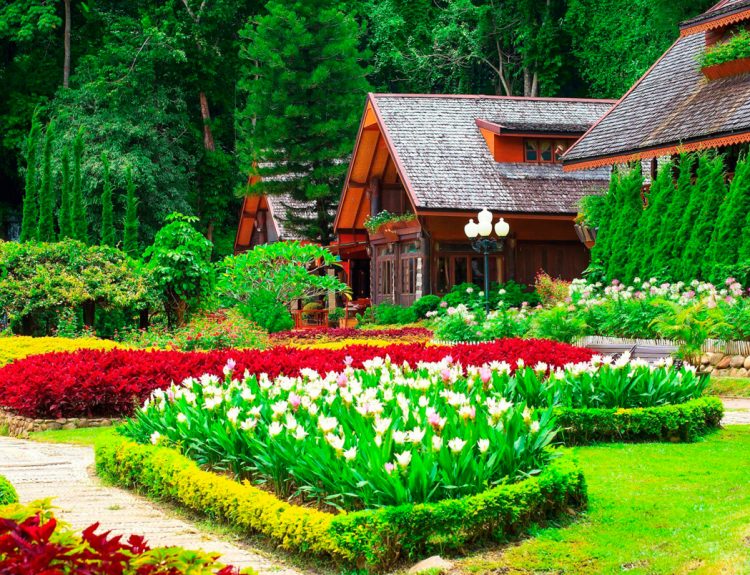The bathroom, a space often overshadowed by its counterparts in the home, serves as more than just a functional area for personal hygiene. It is, in essence, a sanctuary — a private retreat where one can unwind, reflect, and rejuvenate. In a world that demands constant movement, the bathroom provides a momentary respite, a space for quiet reflection, self-care, and even creativity. As such, designing and maintaining a bathroom that aligns with both form and function is crucial to creating a space that nurtures both the body and the mind.
Historically, bathrooms were relegated to the most utilitarian corner of the home. Early bathrooms, particularly in Western societies, were little more than modest rooms with basic plumbing, often shared with other members of the household. It wasn’t until the mid-20th century that bathrooms began to be regarded as more than just a necessity. With the advent of modern plumbing, indoor facilities became commonplace, and the idea of the bathroom as a personal, peaceful retreat began to take shape. Today, the bathroom is often viewed as a place of relaxation and indulgence — an essential part of self-care that contributes to overall well-being.
The Evolving Role of the Bathroom
Over the years, the bathroom has transformed from a strictly utilitarian space into a place of comfort and luxury. The modern bathroom is often equipped with high-end fixtures, sleek tiles, and spa-like amenities, reflecting a shift in the way we perceive personal hygiene and self-care. Showers are no longer basic, utilitarian enclosures but sophisticated spaces complete with rainfall showerheads, adjustable water temperatures, and massaging jets. Bathtubs have evolved as well, with freestanding models and deep soaking tubs becoming popular fixtures in contemporary bathroom design.
In addition to functionality, the aesthetic appeal of the bathroom has also gained prominence. The design choices made in the bathroom, from the choice of materials to the color palette, play an important role in how we experience the space. Modern bathrooms often feature clean lines, minimalist decor, and neutral tones that contribute to an atmosphere of calm and tranquility. These elements help to create an environment that encourages relaxation and mindfulness, inviting individuals to take a break from the hustle and bustle of daily life.
The Psychology of Bathroom Design
The design of a bathroom is deeply tied to psychology. As one of the most personal spaces in a home, the bathroom needs to evoke a sense of comfort, security, and privacy. Its design should promote feelings of relaxation and well-being, making it a space where individuals can retreat to reset and recharge. For many, the act of bathing or showering is a meditative ritual — a moment of solitude that fosters mindfulness and personal reflection.
Colors play a significant role in the psychology of the bathroom. Soft blues, greens, and earth tones are often used to create a calming environment, while white and neutral shades contribute to a sense of cleanliness and simplicity. Bold colors, on the other hand, can energize the space, making it feel more vibrant and lively. The choice of materials, such as natural stone, marble, or wood, can also influence the ambiance. Materials that are tactile and luxurious can elevate the sensory experience of the bathroom, making it a space that appeals not only to sight but also to touch.
Lighting is another critical aspect of bathroom design. Proper lighting is essential for both practical purposes and the overall atmosphere. Soft, ambient lighting can create a serene, spa-like atmosphere, while task lighting is necessary for activities such as shaving or applying makeup. Adjustable lighting, which allows for different moods and settings, has become increasingly popular in modern bathrooms, enabling the space to serve multiple functions throughout the day.
The Bathroom as a Reflection of Personal Style
In many ways, the bathroom can be seen as a reflection of personal style and taste. From the selection of fixtures to the choice of decorative elements, each decision contributes to the overall aesthetic of the space. Some individuals may prefer a minimalist, contemporary design with sleek fixtures and neutral colors, while others may opt for a more traditional or vintage-inspired look, complete with ornate details and intricate tile work.
The bathroom’s design can also be a canvas for creativity. Decorative elements such as framed artwork, plants, and unique accessories can infuse personality and charm into the space. For those who seek a more luxurious experience, high-end materials such as marble countertops, gold-plated faucets, and designer bathtubs can transform an ordinary bathroom into an indulgent retreat.
In many modern homes, the bathroom is no longer just a solitary space; it is often designed to be part of a larger, open-plan concept. En-suite bathrooms, where the bathroom is integrated directly into the master bedroom, have become increasingly popular, allowing for a more cohesive and harmonious living experience. This integration blurs the lines between the bedroom and bathroom, making the bathroom a more visible and central part of the home’s overall design.
Sustainability in Bathroom Design
As the global conversation around sustainability continues to gain momentum, eco-conscious design choices are becoming an integral part of bathroom planning. Water conservation has become a primary concern in bathroom design, with low-flow toilets, energy-efficient faucets, and water-saving showerheads becoming standard in many modern bathrooms. These innovations not only help to reduce water consumption but also contribute to lower utility bills and a more sustainable lifestyle.
In addition to water conservation, the use of sustainable materials is also gaining importance in bathroom design. Materials such as recycled glass, bamboo, and sustainably sourced wood are increasingly being incorporated into bathroom fixtures and finishes. These materials are not only environmentally friendly but also offer a distinctive aesthetic that aligns with the growing trend of eco-conscious living.
The Future of Bathroom Design
Looking ahead, the future of bathroom design will likely continue to focus on both comfort and sustainability. Smart technology, which has already begun to infiltrate homes in the form of voice-activated assistants and automated systems, is expected to become a fixture in bathroom spaces as well. Imagine a bathroom that adjusts the temperature to your preference upon entry, dims the lights for a relaxing atmosphere, and even plays your favorite music or podcast while you shower. The integration of such technology promises to elevate the bathroom experience to new heights, blending convenience, luxury, and sustainability in ways that were once unimaginable.
Moreover, the growing trend of wellness will likely continue to influence bathroom design. As the bathroom becomes more closely tied to self-care and mental health, we can expect to see further advancements in creating spaces that promote relaxation and well-being. Features such as steam showers, chromatherapy lighting (using colors to affect mood), and heated floors are just a few of the ways that bathrooms are being designed to nurture both the body and the mind.
Conclusion
The bathroom, once relegated to a purely functional space, has evolved into a sanctuary of comfort and design. As both a retreat for self-care and a reflection of personal style, the bathroom has become an integral part of modern living. Whether through luxurious fixtures, thoughtful design, or eco-conscious choices, the bathroom now serves as a place to rejuvenate and recharge. As technology and design continue to advance, the bathroom will undoubtedly remain an essential space in the home, where comfort, function, and personal expression seamlessly intertwine.






